Gold’s Glittering Tale: More Than Just a Shiny Metal
Ever noticed how gold seems to have a personality of its own? One day it’s the darling of investors, the next it’s barely making a ripple. The story behind those glittering price tags is far richer — and more complex — than you might think. It’s a dance of supply, demand, geopolitics, and investor psychology all wrapped up in a precious yellow package.
Supply: Digging Deeper Than Just Mines
When we talk gold supply, the obvious star is mining output. But here’s the kicker: gold isn’t just dug up from the earth. Central banks and even recycled gold from jewelry and technology add layers to the supply story. Mining production often grows slowly, and disruptions can send prices soaring. It’s like trying to fill a bathtub with a dripping faucet — you need every drop to matter.
Demand: More Than Just Bling and Bullion
Gold demand is a kaleidoscope of uses: from the traditional jewelry craving in India and China to the industrial demand for electronics, and of course, the never-ending appetite of investors and central banks. This demand fluctuates with cultural trends, economic uncertainty, and inflation fears. Remember, gold is often a financial refuge, a hedge against the chaos of volatile markets.
Is Gold Still the Ultimate Safe Haven in Today’s Market?
We’ve all heard the phrase “gold as a safe haven,” but is that still true in 2025’s unpredictable economic landscape? With rising interest rates and shifting monetary policies, gold’s role is evolving. Some experts argue it remains a critical hedge against inflation and currency devaluation, while others see it competing with cryptocurrencies and other assets for investor attention. For those intrigued by these dynamics, exploring how gold acts as a hedge in uncertain times offers a fascinating deep dive.
Beyond the Basics: The Invisible Hands Shaping Prices
Don’t overlook the subtle influences, like central bank gold purchases, which can dramatically sway prices. When a major central bank steps into the market, it’s like dropping a boulder into a pond — the ripples are felt worldwide. Plus, investor sentiment, geopolitical tensions, and global economic policies all weave into the tapestry of gold price trends.
For those wanting a granular look at these forces, this analysis on central bank gold purchases is a must-read.
Gold’s story is never just about the metal itself; it’s a reflection of our world’s shifting sands — economies rising and falling, fears and hopes intertwined. Intrigued? Dive deeper into the future by checking out the gold price forecast for 2025 and share your thoughts below. Is gold your go-to safe haven, or do you see other contenders stealing the spotlight?
As The Wall Street Journal aptly notes, “Gold prices often reflect the broader economic and geopolitical environment, making it a unique barometer for investors.” [Source]
The Central Bank Effect: Power Brokers Behind Gold’s Price Movements
Central banks wield enormous influence over gold prices, often acting as unseen puppeteers. Their gold purchases and sales signal not only economic confidence but also strategic shifts in monetary policy. When central banks increase gold reserves, it typically reflects hedging against currency risk or inflation, which can buoy prices globally. Conversely, selling gold reserves can depress prices and indicate shifting priorities.
Understanding these moves requires insight into geopolitical contexts and economic forecasts. For investors keen on navigating these waters, our detailed analysis on central bank gold purchases offers an authoritative perspective on these market-shaping transactions.
Investor Sentiment: The Psychological Underpinning of Gold’s Price Fluctuations
Beyond tangible factors like supply and demand, gold prices are profoundly affected by investor psychology. Fear, uncertainty, and optimism ripple through financial markets, with gold often serving as a barometer for risk appetite. During times of turmoil, investors flock to gold as a safe harbor, driving prices up. Conversely, in bullish markets, gold may lose its luster as equities and other assets attract more attention.
This psychological dance means that gold’s price history is as much a story of human emotions as it is of economic metrics. For a nuanced understanding, exploring how gold acts as a hedge in uncertain times can illuminate the intricate links between sentiment and price movements.
Could Emerging Technologies and Cryptocurrencies Challenge Gold’s Dominance?
As digital assets like cryptocurrencies gain traction, the question arises: Will gold retain its status as the preeminent store of value? While crypto offers new investment paradigms, gold’s tangible nature, historical significance, and intrinsic value provide resilience that digital currencies have yet to match consistently. However, evolving investor preferences and technological advances could reshape this dynamic, making it essential to monitor these trends closely.
Market analysts at Investopedia emphasize gold’s enduring role as a hedge against inflation despite emerging asset classes, underlining its unique position in diversified portfolios.
Practical Tips for Investors: Navigating Gold’s Complex Terrain
For those inspired to incorporate gold into their portfolios, a strategic approach is key. Diversifying between physical gold, ETFs, and mining stocks can balance risk and reward. Staying informed about central bank activities and global economic shifts helps anticipate price movements. Moreover, consulting resources like best gold investment strategies to hedge against inflation equips investors to make sound decisions.
Engage with our community by sharing your experiences or questions below — your insights enrich the conversation. For continued learning, explore our comprehensive guides on gold price forecasts and safe gold purchasing practices.
ETF Influence: The Modern Pulse of Gold Investment Flows
Gold Exchange-Traded Funds (ETFs) have revolutionized the way investors interact with the precious metal, injecting a new layer of complexity into market dynamics. Unlike physical gold, ETFs provide instant liquidity and accessibility but can also amplify price volatility due to rapid inflows and outflows driven by investor sentiment and macroeconomic signals.
Institutional investors often leverage ETFs to hedge against currency fluctuations or inflationary pressures, while retail investors use them as a convenient entry point into gold exposure. This duality means ETF demand can sometimes decouple from the physical supply-demand equilibrium, creating short-term price distortions that savvy traders exploit.
Furthermore, regulatory changes impacting ETF structures or transparency can trigger ripple effects throughout the gold market. An investor keen on mastering gold’s price movements must therefore incorporate ETF trends alongside traditional supply-demand factors.
Geopolitical Flashpoints: Catalysts That Spark Gold Price Surges
Geopolitical tensions remain one of the most potent catalysts for unexpected gold price spikes. Events such as trade disputes, military conflicts, or sanctions reshape risk perceptions instantaneously, often precipitating a flight to gold as a global safe haven.
However, gold’s reaction to geopolitical risk is not always linear. The metal’s price sensitivity depends on the nature, scale, and duration of the event, as well as concurrent economic conditions. For example, a localized conflict might trigger a temporary surge, while prolonged instability in major economies can sustain elevated prices.
Moreover, the interplay between geopolitical developments and currency markets often complicates the gold price trajectory. A weakening dollar amid geopolitical uncertainty typically propels gold upwards, but if the dollar strengthens due to safe-haven flows, gold might paradoxically see muted gains.
How Do Gold ETFs Impact the Physical Gold Market and Price Stability?
This nuanced question unveils a critical intersection between financial innovation and commodity markets. Gold ETFs, by enabling fractional ownership and easy trading, have expanded gold’s investor base dramatically. Yet, they also introduce the risk of a disconnect between paper gold holdings and actual physical gold reserves.
When ETF redemptions surge, fund managers must either sell physical gold or borrow it, influencing physical demand and thus prices. Conversely, large inflows can lead to accumulation of physical gold stocks, tightening supply. This mechanism can magnify price swings beyond fundamentals.
Academic research published by the National Bureau of Economic Research highlights how ETF flows correlate strongly with short-term gold price volatility, underscoring the need for investors to monitor these instruments closely.
Emerging Trends: ESG Gold and Technological Innovations Reshaping Demand
Environmental, Social, and Governance (ESG) criteria are increasingly influencing gold mining and investment decisions. Sustainable mining practices and traceability certifications are becoming prerequisites for institutional investors, potentially constraining supply from non-compliant sources.
Simultaneously, technological advancements such as blockchain-enabled provenance tracking promise to enhance transparency and consumer confidence in gold products. This could reshape gold’s appeal, especially among younger, socially-conscious investors.
On the demand side, innovations in electronics and medical devices continue to drive niche industrial uses of gold, albeit at a smaller scale compared to investment and jewelry. Still, these applications contribute to the metal’s overall demand complexity.
Understanding these evolving dimensions is critical for forecasting gold’s future trajectory and identifying investment opportunities that align with emerging global values.
For those eager to harness these insights, our upcoming deep-dive series on ESG impact on gold markets and technological innovations will provide unparalleled expertise.
Decoding Gold’s Role Amidst Global Monetary Shifts
As central banks worldwide recalibrate their monetary policies in 2025, the implications for gold’s price trajectory become especially intricate. The persistent tightening of interest rates in developed economies challenges gold’s traditional allure, often viewed as a non-yielding asset. Yet, paradoxically, these very shifts can heighten inflation expectations and currency volatility, bolstering gold’s appeal as a hedge. Investors who keenly track these macroeconomic oscillations stand to better anticipate gold price inflections. For a deeper dive into these evolving market forces, our gold price forecast for 2025 offers robust expert perspectives on what to expect.
Balancing the Scales: How to Strategically Combine Physical Gold and Market Instruments
In the modern investment landscape, holding physical gold bars or coins remains a cornerstone for safeguarding wealth against systemic risks. Yet, complementing physical assets with financial vehicles like ETFs and mining stocks can optimize liquidity and returns. This hybrid approach addresses the challenges of storage, authenticity, and market timing while capturing potential upside from operational leverage in mining companies. Curious about refining your portfolio mix? Our specialized guide on safe gold purchasing practices and insights on comparing stocks, ETFs, and funds can illuminate prudent strategies for 2025 and beyond.
What Are the Subtle Market Signals That Precede Gold Price Reversals?
Experienced traders and analysts know that gold price reversals seldom happen in isolation. Instead, they are often preceded by nuanced signals such as divergences in ETF holdings versus physical demand, shifts in central bank buying patterns, or changes in global liquidity conditions. For example, a sustained decline in ETF inflows combined with increased central bank purchases may hint at an impending bullish phase. Additionally, monitoring geopolitical developments alongside currency strength metrics provides early warnings of market sentiment shifts. For those interested, our thorough analysis on key trends shaping gold prices in 2025 offers data-driven insights to help decode these signals.
Integrating ESG Considerations: The New Frontier in Gold Investing
Environmental, Social, and Governance (ESG) factors are no longer peripheral but central to gold investing. The surge in demand for responsibly sourced gold is reshaping mining operations worldwide, with companies adopting transparent reporting and sustainable practices to meet investor expectations. This metamorphosis influences supply chains and may impact cost structures, ultimately affecting prices. For forward-thinking investors, aligning portfolios with ESG-compliant assets not only mitigates reputational risks but also taps into a growing market segment. To explore this emerging theme, our upcoming series on ESG impact on gold markets promises cutting-edge analysis.
The Subtle Influence of Currency Fluctuations on Gold Valuations
Gold’s valuation intricately intertwines with currency movements, especially the US dollar, which traditionally holds inverse correlation with gold prices. However, the 2025 landscape exhibits more complex behavior due to multi-polar reserve currency dynamics and regional economic divergences. For instance, a strengthening dollar driven by safe-haven flows might constrain gold gains, whereas dollar weakness amid inflationary pressures tends to propel gold upward. Additionally, emerging market currencies’ volatility injects further nuances, impacting local gold demand and pricing. Investors mindful of these subtleties can enhance portfolio resilience by incorporating currency risk assessments alongside commodity analysis.
How Does Gold’s Interaction with Cryptocurrency Markets Affect Its Investment Case?
The burgeoning cryptocurrency ecosystem poses both challenges and opportunities for gold investors. While digital assets like Bitcoin often tout themselves as “digital gold,” their price volatility and regulatory uncertainties contrast with gold’s centuries-long stability and physical tangibility. Notably, periods of crypto market turbulence have sometimes coincided with increased gold buying, suggesting a complementary rather than purely competitive relationship. Moreover, blockchain technology is being explored to improve gold supply chain transparency, potentially enhancing investor confidence. For a nuanced perspective, our guide on gold as a hedge in uncertain times provides valuable insights into this evolving interplay.
As this complex gold narrative unfolds, your insights and experiences become invaluable. We invite you to share your thoughts and questions in the comments below and explore further resources to master the multifaceted gold investment landscape in 2025.
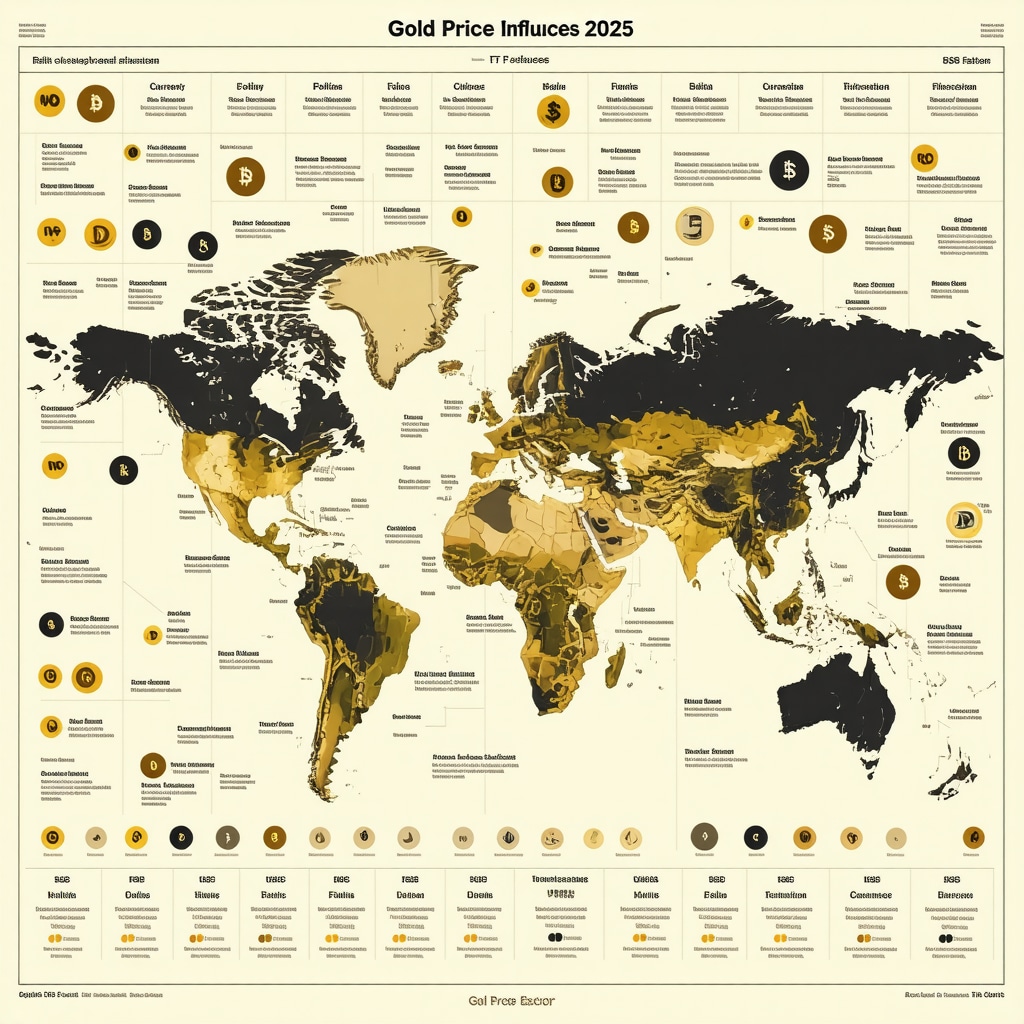
Expert Insights & Advanced Considerations
Central Bank Gold Purchases: The Quiet Market Movers
While mining supply and investor demand grab headlines, central bank gold purchases remain a subtle yet powerful force shaping price trajectories. These transactions act as strategic economic signals, reflecting shifts in monetary policy and currency hedging strategies that can precede major market moves. Investors who monitor these patterns gain a crucial edge in anticipating price inflections.
ETF Flows and Physical Gold Disparities Create Price Nuances
The rise of gold ETFs has introduced a complex interplay between paper gold holdings and actual physical reserves. Rapid inflows or outflows in ETFs can cause temporary price distortions that diverge from underlying supply-demand fundamentals. Understanding this dynamic is essential for sophisticated portfolio management and timing market entries or exits.
ESG and Technological Innovation Are Reshaping Gold’s Investment Landscape
The growing emphasis on Environmental, Social, and Governance (ESG) criteria alongside blockchain-based provenance tracking is transforming gold mining and investment practices. These trends not only influence supply availability but also attract a new generation of socially conscious investors, potentially altering demand profiles and long-term valuation paradigms.
Gold’s Role Amid Monetary Tightening Is Paradoxical Yet Strategic
In 2025’s environment of rising interest rates, gold’s traditional non-yielding nature challenges its appeal. However, this tightening simultaneously heightens inflation expectations and currency volatility, reinforcing gold’s strategic importance as a hedge. Navigating this paradox requires nuanced understanding of macroeconomic indicators and currency movements.
Investor Psychology Remains a Critical Price Driver
Beyond tangible factors, gold prices are deeply intertwined with human sentiment—fear, uncertainty, and risk appetite. Recognizing psychological market drivers complements fundamental analysis and aids in anticipating short-term volatility and long-term trends.
Curated Expert Resources
- Gold Price Forecast 2025 – What Analysts Predict for Investors: An authoritative synthesis of macroeconomic and geopolitical factors likely to impact gold prices throughout 2025, offering actionable insights for strategic positioning. (Read More)
- How Central Bank Gold Purchases Influence Global Prices: A detailed exploration of central banks’ market interventions and their ripple effects on global gold valuations, essential for understanding price drivers beyond supply and demand. (Read More)
- Understanding How Gold Acts as a Hedge in Uncertain Times: A comprehensive guide to the psychological and financial mechanisms that reinforce gold’s safe-haven status amid economic volatility. (Read More)
- Best Gold Investment Strategies to Hedge Against Inflation: Practical advice on balancing physical gold, ETFs, and mining stocks to build resilient portfolios tailored for inflationary environments. (Read More)
- Gold Market Analysis: Key Trends Shaping Prices in 2025: Data-driven insights into emerging market signals, geopolitical catalysts, and investor sentiment trends guiding gold prices this year. (Read More)
Final Expert Perspective
The labyrinthine forces driving gold prices in 2025 defy simplistic narratives. From the strategic maneuvers of central banks to the nuanced interplay between ETF liquidity and physical supply, the gold market demands a sophisticated, multifaceted approach. ESG considerations and evolving investor psychology further enrich this complex tapestry, underscoring gold’s enduring role as both a tangible asset and a financial barometer. Navigating these dynamics with informed insight is paramount for investors seeking to harness gold’s full potential amid global uncertainty.
Engage with these expert analyses and deepen your understanding by exploring our in-depth resources. Share your professional perspectives and join the conversation shaping the future of gold investment.
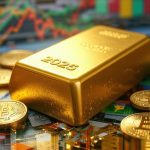


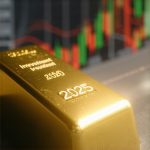
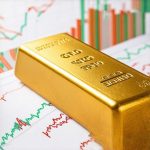
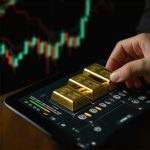
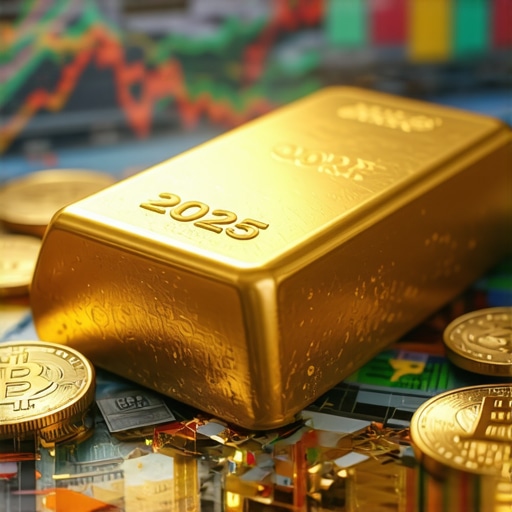
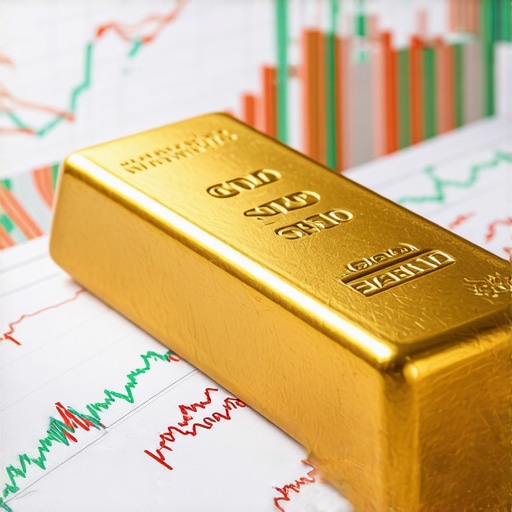

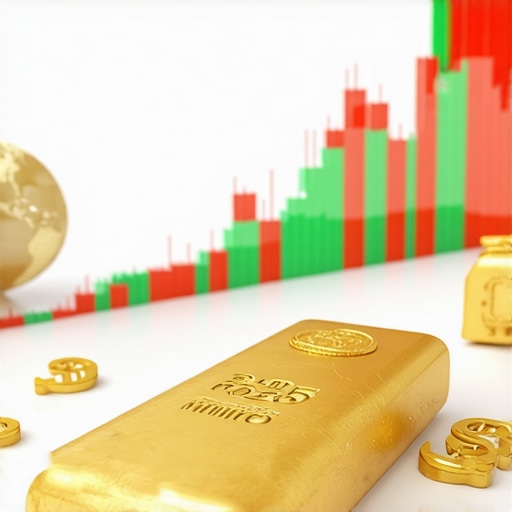
I appreciate how the post dives beyond the obvious factors of mining output to show how central banks and recycled gold influence supply. It really underscores how gold isn’t just about the metal itself but about complex macroeconomic and geopolitical forces. In my experience following gold prices, sudden central bank purchases often coincide with shifts in global monetary policy that then ripple through investor sentiment, causing noticeable price movements. What intrigues me is the psychological aspect: investors’ fear or optimism can amplify these price reactions even when physical supply-demand fundamentals remain steady. I’d love to hear how others balance these tangible factors with the emotional market swings when deciding to buy or sell gold. Do you lean more on tracking central bank activities and geopolitical signals, or do you trust market sentiment indicators more for timing your moves? Also, with the growing influence of gold ETFs adding a layer of price volatility, how do you see this impacting the role of physical gold in portfolios? It feels like navigating gold investment today requires both an understanding of hard data and a sensitivity to market psychology, which certainly keeps it fascinating and challenging.